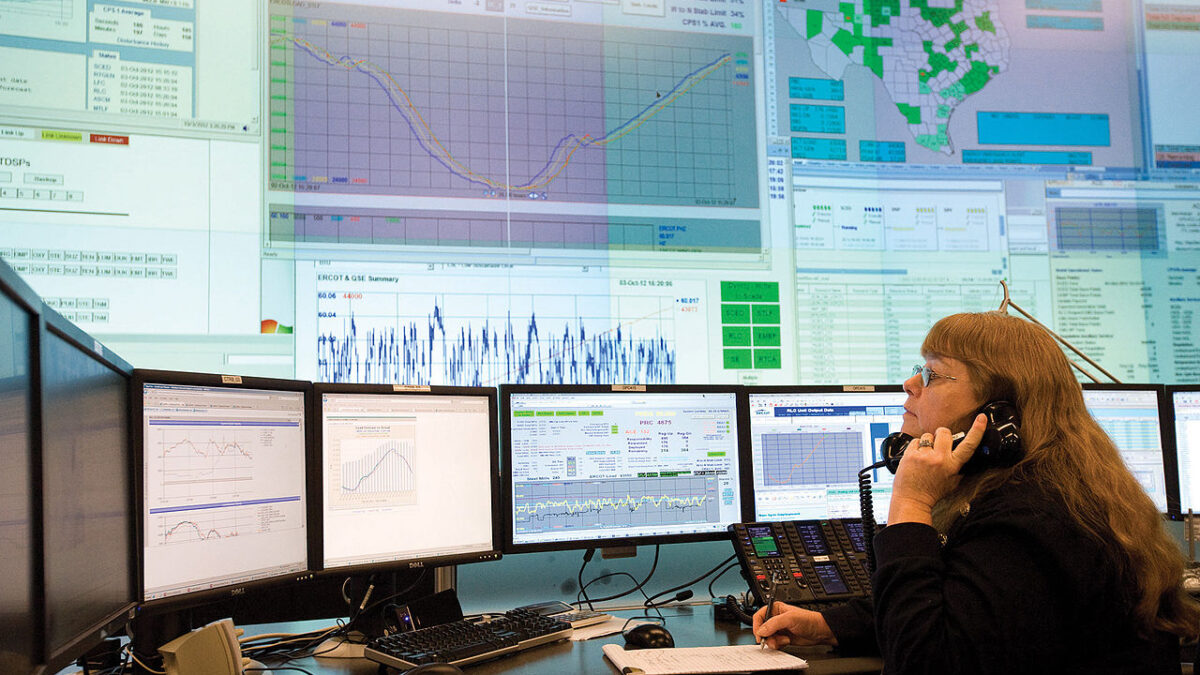Texas is seeing a hot summer, and with ongoing economic growth, electricity demand within the Electric Reliability Council of Texas (ERCOT) region has already set all-time records. Still, the hottest days of the summer are likely still to come.
After the widespread blackouts in February 2021, many Texans wonder how long the grid will be able to handle the state’s growing electricity demand — concerns amplified by Beto O’Rourke’s gubernatorial campaign and a supportive media. O’Rourke isn’t likely to win in red Texas in a red-tsunami year, but a summer rolling blackout blamed on climate change and Republicans would help close the gap in the polls.
The ERCOT grid may be fine for the rest of this summer because the past two years have not seen substantial retirements of dispatchable gas and coal generation that the grid relies upon to meet peak demand as was seen in the prior five years. However, the long-term picture shows that dispatchable capacity declining precipitously and being replaced entirely by wind and solar generation that is not being held to any reliability standard. The threat of outages will continue to increase until the Public Utility Commission of Texas (PUC) requires wind and solar generators to pay for the reliability costs they impose on the grid.
The heat waves of the past two months illustrate exactly why the Texas grid is becoming less reliable. The first factor in play is growing demand. The previous demand record of 74,820 megawatts, set in August 2019, was broken repeatedly this summer, with demand reaching 78,419 megawatts on July 12.
The second factor is our increasing reliance on wind generation that does not line up with demand. Wind generation has often been below 6,000 megawatts during the hottest hours of the afternoon this summer, less than 20 percent of its installed capacity and much less than the 9,363 megawatts ERCOT expects from wind during peak summer periods.
Much of the mainstream media and “expert” commentators are focusing on outages of gas and coal generators. While those outages are occurring at a higher rate than ERCOT expects during the summer, our dispatchable fleet has still operated at well above 90 percent of its rated summer capacity with far less variability than wind and solar. Unlike the wind, which may produce only 2 percent of its installed capacity, as it was during its nadir on July 13, but could easily produce more than 50 percent during the next heat wave, Texas can count on gas and coal to be above 90% during the hottest days.
What matters most to the long-term health of the ERCOT market is electricity prices, and the problem with the high variance of our wind and solar output is that it is leading to more variance in prices. Wholesale electricity prices in ERCOT often fluctuate from more than $1000/MWh to negative in the span of a few days, depending on whether wind output is outpacing demand or not.
Given these massive and unpredictable swings in prices, it’s no wonder that Texas, which sits on an ocean of natural gas, is not building gas-fired power plants to stabilize its grid. Power plant developers cannot predict their revenue from year to year, much less 20 years into the future, and ensure that they can get a return on their investment.
In contrast, wind and solar generators are being built because they benefit from massive federal subsidies and often have guaranteed offtake contracts with large commercial and industrial users or municipal power utilities, all of whom want to claim they are 100 percent powered by renewable energy. Of course, those claims omit the fact that Texans are all paying for backup power to support the grid when the wind and sun aren’t available — meaning they’re not really 100 percent renewable.
And therein lies the problem that the Texas PUC must solve. Who pays for the extra backup power to support the explosive growth of wind and solar on the Texas grid? Right now, no one is paying for it, and the reliability of the grid is degrading as a result.
The PUC is embarking on a redesign of the ERCOT market in an attempt to ensure that the grid has adequate resources to meet growing demand. However, the current proposals are fatally flawed because they impose no discipline on the growth of wind and solar generation, instead placing the cost of ensuring reliability entirely on ratepayers.
Unfortunately, any plan that put reliability costs solely on Texas ratepayers will end up chasing wind and solar subsidies with subsidies for reliable backup power, just as California and Germany are doing. Texas electric rates are already skyrocketing, and in a couple of years, Texas electric bills will start to look like California’s instead of the low-cost electricity the state is accustomed to.
The ERCOT market has invested over $60 billion of private capital in new wind and solar generation, on top of billions in federal subsidies. It’s not hard to imagine our electric system being more affordable and reliable if $30 billion of that $60 billion were invested in more reliable generation and weather resiliency measures.
The faulty notion that the ERCOT market simply needs more investment in generation was repeated this week by ERCOT interim CEO Brad Jones. “I want as much [wind and solar] in this market as we can get,” he said. “At the same time, we have to make sure we have enough dispatchable generation when the wind doesn’t blow and the sun doesn’t shine.” What Jones fails to recognize is that the increase in wind and solar generation is making it more expensive to keep the lights on. Texas does not need more investment. It needs smarter investment.
The most cost-effective way to fix this investment problem is to require wind and solar generators to purchase backup power or energy storage such as massive battery farms and to bring their variability more in line with that of gas, coal, and nuclear generators. This requirement will impose appropriate discipline on the growth of wind and solar by ensuring that new wind and solar generation is not increasing the variability of electricity supply.
The Texas Public Policy Foundation was calling for this reform long before February 2021, and the Texas Senate and Gov. Greg Abbott called for it almost a year ago, but the PUC is currently not even studying it. It is time for the PUC to stop avoiding the problem and finally get it right. The future of the Texas grid and tens of millions of Texans depends on it.









